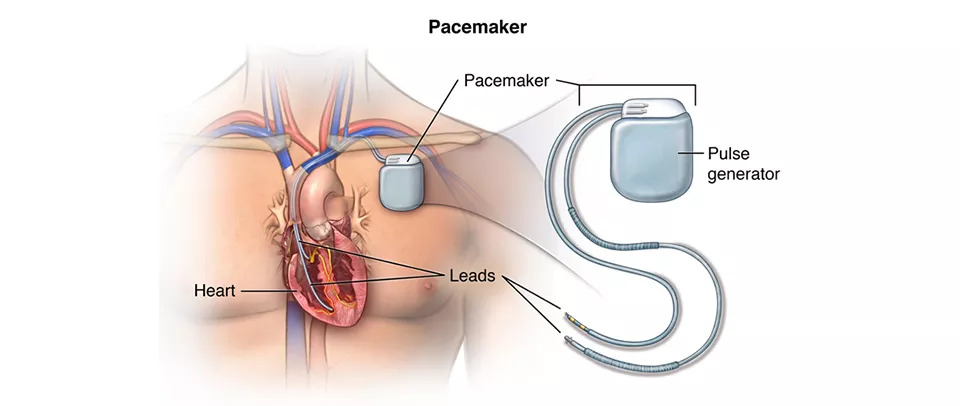Pacemaker Implant
A Pacemaker is a small device that helps control your abnormal heart rhythms. It uses electrical impulses through electrodes contacting the heart muscles. It has two parts; one is a pulse generator and the other one is lead (electrodes). Both are placed under the skin to control patient’s heart rate. It is advised to be used only for a low heartbeat and heart block. It is recommended to ensure the heartbeat does not slow down.
The procedure does not require an open-heart surgery. It is invasive surgery, giving access to the heart chambers under local range. The doctor will discuss the implantation before the procedure. Patient will not be permitted to eat or drink, up to 8 hours, and all medications must be stopped before the pacemaker implant.

Types of Pacemaker Implant
Depending on the symptoms the required type of pacemaker is used. It will suit the specific heart condition and diagnostic evaluation. Based on the recommendations, doctors will choose the right pacemaker for your condition.
Single Chamber Pacemaker
It connects the pulse generator to one chamber of your heart. It is used to control heartbeat by connecting the leads. This type is used for most people. Depending on the symptoms the pacemaker is usually connected to the upper heart chamber (right atrium) to stimulate pacing in that chamber.
Dual Chamber Pacemaker
By connecting two leads, the devices are connected to both chambers on the right heart side atrium and the ventricle. They will regulate the pace contractions of both chambers.
Biventricular Pacemaker
It is known as Cardiac Resynchronization Therapy (CRT) device and has three leads; one to the right atrium and the other two to the two ventricles. It is used to treat heart failures in order to facilitate simultaneous pumping.

